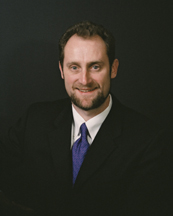By Lillian Hartgrove, State Board of Education Chairman
Special to the UCBJ
One’s appearance is not an indication of one’s character or work ethic. And we have all heard the adage, “Don’t judge a book by its cover.” Yet if we were totally honest, we would admit that we frequently do that very thing – we rely upon appearance to reach certain conclusions about people. Further, our society places significant value on appearance. This type of judgment is certainly unfair, but is it illegal? This answer is, it certainly can be!
Appearance covers a wide variety of characteristics such as physical attributes including weight, height, eye color, hairstyle, as well as style/fashion in clothing choices. According to the U.S. Equal Employment Opportunity Commission (EEOC) and Federal anti-discrimination laws, physical appearance except for skin color is not a protected class. Under federal and most state laws, the protected classes include only race, color, religion, sex, national origin, pregnancy, age, disability, citizenship, familiar status, veteran status and genetic information.
However, potential legal liability for appearance discrimination can arise when a physical trait is a mutable or immutable characteristic of a protected class. For example, hair-based discrimination may occur against black people based on their natural hairstyles, which may include cornrows, dreadlocks and Afro hairstyles. Hair-based discrimination may also occur against individuals who have a religious or cultural connection with uncut hair, including but not limited to Native Americans, Sikhs, Muslims, Jews, Nazirites, or Rastafarians, some of whom may also identify as black.
Examples of religious, disability, age, or gender-based discrimination in the workplace with respect to hair include:
- A Sikh applicant denied employment because of his religiously maintained uncut hair and turban;
- An Orthodox Jewish employee ordered to shave his beard and cut his payot (sidelocks or sideburns) to keep his job;
- A black salesperson forced to shave his beard despite a medical condition that makes it painful to shave;
- A 60-year-old employee with gray hair told to color their hair or lose their job; or
- A male server ordered to cut his ponytail while similar grooming policies are not imposed on female servers.
Such discrimination may also occur in the public or private school setting, when natural hairstyles are prohibited. For example, in late 2018, a New Jersey high school wrestler was told by the referee that he had to cut his dreadlocks off or forfeit the match. This resulted in this young man cutting off his dreadlocks ringside before being allowed to compete. Similarly, in 2018, a 6-year-old boy in Florida was not allowed to attend a private “Christian” school because of his dreadlocks.
This type of discrimination can also be present in the public accommodation setting. For example, a restaurant tells a patron that she is not welcome because her natural hairstyle, such as an Afro or dreadlocks, does not meet their dress code.
In 2018, the U.S. Supreme Court declined an opportunity to address hair-based discrimination involving an Alabama woman fired from a call center job in 2010 because she refused to cut her dreadlocks. In that case, EEOC v. Catastrophe Management Systems, Chastity Jones, a black woman, was interviewed for a customer service representative job after being selected from a pool of online applicants. Jones arrived for the interview wearing her hair in short dreadlocks. After she was offered the job, the company’s HR manager told her that CMS could not hire her “with the dreadlocks.” When asked why, the HR manager told her, “They tend to get messy, although I’m not saying yours do but you know what I’m talking about.” When Jones declined to change her hair, she was fired. CMS relied upon its hairstyle policy, which said that an employee’s “hairstyle should reflect a business/professional image” and that “[n]o excessive hairstyles or unusual colors are acceptable” as banning dreadlocks.
The EEOC filed a lawsuit on behalf of Jones, alleging racial discrimination in violation of Title VII of the Civil Rights Act of 1964, claiming that race encompasses “cultural characteristics related to race or ethnicity…[including] grooming practices,” and that “dreadlocks are…a racial characteristic, just as skin color is a racial characteristic.”
The District Court disagreed and dismissed the lawsuit. The 11thCircuit Court of Appeals upheld the dismissal, stating that the EEOC “did not state a plausible claim that CMS intentionally discriminated against Ms. Jones because of her race.” The EEOC requested a rehearing en banc, which was declined by the 11thCircuit Court of Appeals. The EEOC did not file an appeal with the U.S. Supreme Court. The NAACP Legal Defense and Education Fund filed a motion with the Supreme Court to allow Ms. Jones to intervene and appeal her case, but that motion was denied.
While at first glance, this ruling may seem to allow employers carte blancheregarding grooming and hairstyle policies, caution should be exercised as the failure of the Supreme Court to review this case was based on a technical procedural issue since the EEOC was the original plaintiff. However, keep in mind that prior legal precedent recognized this type of discrimination as being actionable. In 1989, the Supreme Court ruled in Price Waterhouse v. Hopkins, that Title VII prohibits discrimination based on stereotypes, regardless of whether the stereotype focuses on mutable or immutable traits. Every appellate court that has considered a similar legal question since the Price Waterhouse decision has consistently followed the Supreme Court’s guidance, except this anomalous 11thCircuit decision.
Significantly, the 7thCircuit Court of Appeals has ruled that Title VII bars an employer from taking negative employment action against a black employee because she wore her hair in an Afro. In the case of Jenkins v. Blue Cross Mutual Hospital Insurance, Inc., the 7thCircuit held in 1976 that an EEOC charge alleging discrimination stemming from grooming requirements which applied particularly to black persons constituted a sufficient charge of racial discrimination. Citing Smith v. Delta Air Lines, Inc.(5thCir. 1973).
Moreover, caution should be exercised in the drafting and implementation of grooming and hairstyle policies given the current legal climate, as concerns regarding appearance discrimination have resulted in some states and cities considering and/or enacting legislation to prohibit hair-related discrimination.
In February 2019, the New York City Commission on Human Rights published new guidance which explained that it considered hair-based discrimination to be in violation of the New York City Human Rights Law (NYCHRL). This guidance prohibits hair-based discrimination in the employment, public housing and public housing sectors, as well as discriminatory harassment and bias-based profiling by law enforcement. However, implementation and enforcement of this guidance is likely to result in legal challenges, as this change was not brought about through an amendment of the NYCHRL or by passing a new law to prohibit hair discrimination.
In June 2019, New Jersey proposed legislation which would prohibit discrimination in employment and in schools based on “traits historically associated with race, including, but not limited to, hair texture, hair type, and protective hairstyles,” like twists or braids. This action was taken largely in response to the wrestler situation referenced above.
On July 3, 2019, California became the first state to protect its citizens from discrimination based on hairstyle. Known as The Crown Act: Creating a Respectful and Open Workplace for Natural Hair. This state law prohibits employers and schools in California from discriminating against individuals based on their wearing their hair in a non-European style, which includes cornrows, Afros or dreadlocks.
What should employers do, given existing legal precedent and this recent trend? Employers should be careful when drafting and enforcing grooming and dress policies, to ensure that they do not have a discriminatory impact on protected classes. While policies can be applied to protect legitimate health and safety concerns, employers should ensure that such concerns are not speculative and should consider whether alternative ways are available to address those concerns before imposing a ban or restriction on employees’ hairstyles.
Also, employers should be careful with policies that are drafted to promote a certain corporate image or are directed toward customer preferences for appearance, as an employee’s hair texture or hairstyle generally has no bearing on their ability to perform the essential functions of a job.







